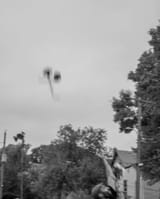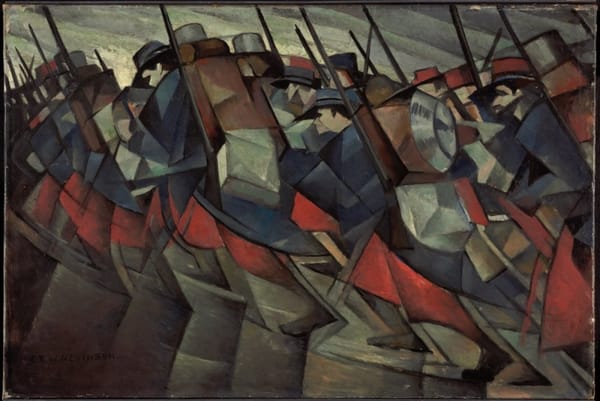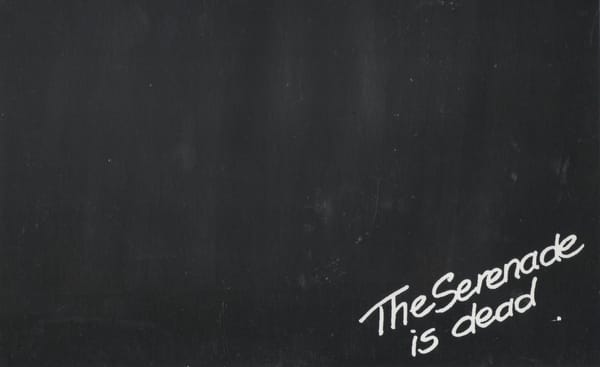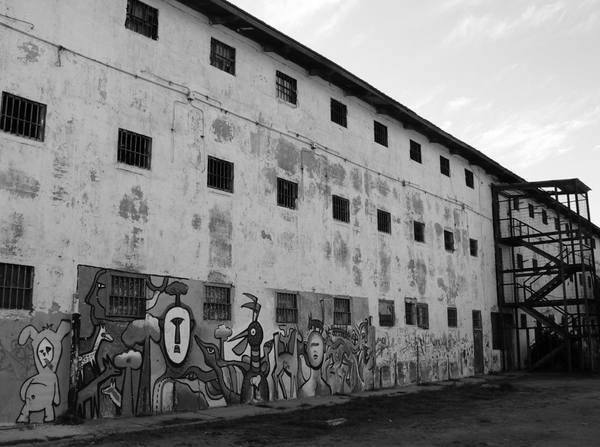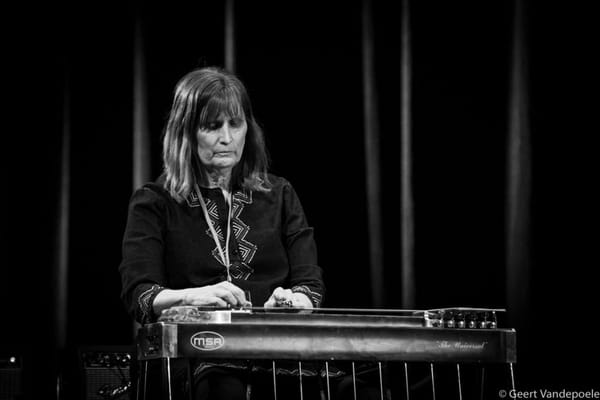"I Go Openly Back to the Tree"
An Homage to Charles Gayle
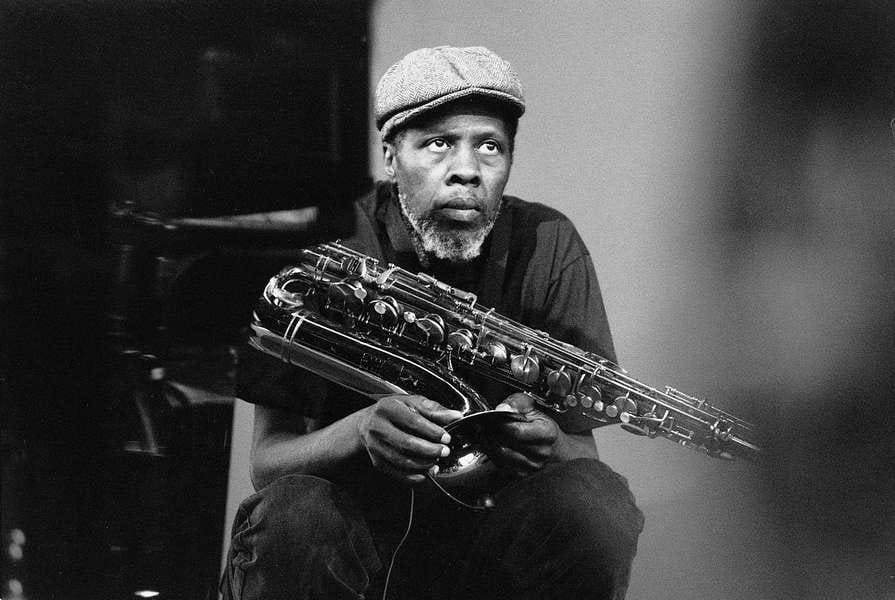
Art loves its outsiders—though rarely in their time, and preferably kept in place. Multi-instrumentalist Charles Gayle, who died last week at the age of eighty-four, spent much of his life outside, literally and figuratively—living on the streets for more than a decade and then intermittently, all the while playing at the furthest limits of freely improvised music. In this respect, Gayle was an inside-outsider—known to the knowing as the strongest tenor this side of the 1960s; a current of sound rather than a revival. Gayle had the ghost—from otherworldly shrieks and plaintive flails in the altissimo to barge-like announcements amid effortful glossolalia, his voice was multiple and singular.
The story of Gayle’s “discovery” is legend, but too often its retelling leaves aside the artist’s words, replaying a life of tragic obscurity before critical redemption. From Henry Grimes to Charles Gayle to Giuseppi Logan, too many great Black musicians playing outside of popular form have endured periods of severe economic hardship—but the standard metanarrative of the artist’s “return” from the wilderness of subsistence to self-commemorative expression tends either Odyssean or piteous, brushing over many a musician’s own account.
Gayle embraced the streets as a place of study and of unobliged expression—not as an interval of privation, but a platform in itself. As Gayle recounts in conversation with his friend and collaborator William Parker, he’d apprenticed in the Buffalo scene before moving to New York, where he would play with figures such as Buell Neidlinger and Eddie Gale. But for most of the seventies and eighties, his restive solos sought reception outside of clubs and recordings, as he refined his craft in concert with the din of the city.
Lured back into the scene by Peter Kowald in 1984, Gayle would remain unrecorded until cutting three superb albums for Silkheart Records in 1988 alone. When the topic was broached in interviews, Gayle only spoke of his street years as a necessary part of his formation—refuting pity and romanticism alike. In the 1985 documentary Rising Tones Cross, filmed at the tail end of Gayle’s street years but before his studio debut, he speaks at length and with clarity about his circumstances:
I came to New York City broke. I still am broke, not to evaluate everything through money … But I have a desire to play, so far so good. I’ve lived in abandoned buildings. Right now I’m living in basically an abandoned building … I don’t want to say I’m a street person, I don’t know. But I like the streets, I grew up on them to a degree, I’m still in there and I hang out and I live in a neighbourhood that is beautiful to me. To other people, I don’t know, but the energy is here. And the hard times become very bearable, because still, objectively, I want to play. If I don’t make any money, fine, if I do, fine. I’ve been going this far and this long, so why stop now. The hard times I think are necessary … I’ve had to eat off the sidewalks. I’ve had to eat out of garbage cans … But I have to say that I’ve maintained practicing. I didn’t plan this, but it hardens you. It doesn’t harden your heart, I don’t mean that. It hardens you to be able to take it, take whatever it is, do it, get it done. You don’t have to worry, make no excuses, don’t get too heady, just do it.
Gayle’s debut album, Homeless, names and responds to this experience as a spiritual trial rather than a social phenomenon, where in the final instance we’re all left to make artistic virtue of economic necessity. And in spite of his early and lifelong advocacy for Gayle’s music, there’s no whiff of saviourism to poet steve dalachinsky’s accompanying notes. Rather, steve describes himself as a mere conduit of Gayle’s own persuasive power, scouting for Silkheart from his own wide-eared enthusiasm:
Several correspondences pro and con passed before Keith (Knox) informed me that it was tentatively agreed to record Gayle for Silkheart. By this time he was living in an abandoned building on the Lower Eastside, playing on the street and doing an occasional gig in a bar or gallery. When I told him at one such gig of the possibility of his being recorded, he replied nonchalantly, "well, if it happens that's fine. If it doesn't, that's fine too."
Here again, Gayle’s indifference to the offer balances his total dedication to the music itself—non-commodified and self-replenishing, in contrast to the scarcity of means endured by so many musicians. Gayle’s unconcern is self-protective—but alarmingly, producer Knox was very nearly as indifferent to the opportunity. “The music was pretty interesting, but I wasn't sure just how special it was and turned the tape over to my associate, Lars Olof Gustavsson, for his reactions,” Knox admits in a chilly liner note. “He was quite lukewarm about the whole thing, which is a fair indication of just how hard it can be to assess new music and new musicians when presented via low fidelity live recordings.” It’s hard to imagine this reluctance in retrospect of what these early albums contain—including an arranged date with John Tcichai, and some of the most haunting trio playing this side of Ayler’s Spiritual Unity.
Never content outside the music, dalachinsky would remain one of Gayle’s most attentive chroniclers. His 2006 book The Final Nite & Other Poems collects almost two decades of a “Charles Gayle Notebook,” lines improvised within earshot of gigs in New York galleries and lofts. It’s a remarkable anthology, beginning with dalachinsky’s earliest impression of Gayle’s trio, from June 25, 1987 at the Knitting Factory, and encompassing any number of historic firsts: Gayle’s first collaboration with Milford Graves; his first live excursions into jazz pianism and pantomime; even the first of his frequently offensive rants against abortion and homosexuality, which would mar his live appearances for many years.
As a record of events, dalachinsky’s response to this fire-and-brimstone oratory is restrained—pro-choice and yet solicitous of Gayle’s extremes. For my part, I’d prefer not to speak of these outbursts—I recall fading out an otherwise astonishing 1994 recording of Gayle on live radio because of his bilious evangelism—but Gayle insisted on inserting his opinions into his music. It’s part of his complication, another (albeit unequal) voicing of the faith and pain he sought to musicalize. Gayle was an oratorical power too, however bizarre his digressions, and dalachinsky’s daybook includes sage arrangements of phone conversations and personal counsel alongside gig transcriptions—a close portrait of a truculent genius: “at last circus & war are one/& the parade is only for its own sake,” dalachinsky writes, always returning to the music.
In 1987, dalachinsky responded to the trio of Hill Green, Dave Pleasant, and Charles Gayle with a poem called ‘The Sleeping Tree,’ which perceives the unity of voice and instrument as “soul inside/a willing tree.” This simple, awestruck verse appears in the liner notes to Homeless, and its central metaphor extends throughout steve’s annotations, as a figure of consistency and growth. At a 1994 gig, he writes:
we all have to live
somewhere
in my house
my work
the music
you live in
your house
the street
the music
give up the body
the sweet smell of citrus on the skin
the innocence of clementine
go restlessly into numbers
I go openly back
to the tree……..
It’s a sad occasion and a great week to follow the many branches that extend from Gayle’s body of work—from ominous fusion dates with Rollins Band to elastic renderings of standards to weeping suites for bass clarinet. On last week’s episode of Radio State, I selected just a few favourite recordings: the bustling title track from the Silkheart album Spirits Before, featuring Sirone and Dave Pleasant; a heavy quartet with both William Parker and Vattel Cherry on bass; and an archival document of Parker and Gayle from 1987, some of the strongest music you’ll hear anywhere.
Rest well, Charles Gayle, and thank you for the music.

